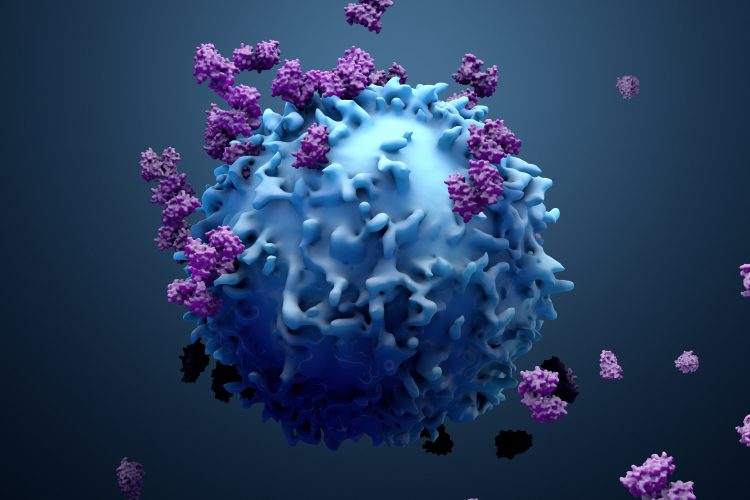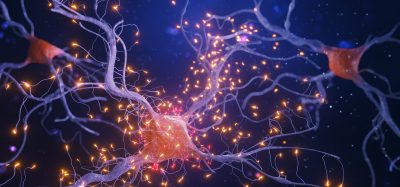Could illuminating the surfaceome help find new targeted cancer therapies?
Posted: 11 July 2024 | Roman Thomas (DISCO Pharmaceuticals) | No comments yet
At the heart of precision oncology is the need to increase our understanding and knowledge of surface proteins found on tumour cells. Here Roman Thomas, CEO of DISCO Pharmaceuticals, explains how it is using cutting-edge technology to explore the surfaceome – a map of the proteins on the cell’s surface – that could lead to new targets for novel cancer drugs.


To date, there are less than 30 known surface proteins that form the basis of all approved cancer-targeted therapies of all modalities, including antibody-drug conjugates (ADCs), T-cell engagers, CAR T-cells and radiopharmaceuticals.
ADCs are hot properties in the pharma pipeline, but without finding new targets their potential to treat certain cancer indications is not fully realised. Existing technologies used to identify new cancer targets are limited and may be overlooking potential new cancer-specific surface targets that could lead to the development of novel medicines.
Ribonucleic acid (RNA) sequencing is an established approach, in which messenger RNA (mRNA) transcripts within the cell are used to produce a readout of the proteins they code for on the cell surface. However, this method has several drawbacks: mRNA levels don’t correspond well to protein levels on the cell surface; there is a lack of information about how proteins are organised on the cell surface; and prediction is limited to structural features such as transmembrane (TM) domains.
Meanwhile, proteomics is another method currently being used to identify cancer targets. But this method misses proteins that are not covered with chains of sugar molecules (N-glycosylated) and/or is unable to identify information about organisation of proteins on the cell surface. Therefore, to create targeted treatments there is the need to develop novel technologies to identify targets on the surface of cancer cells.
Scientists and, increasingly, biotechs and pharma companies hope to create a more detailed map of the surfaceome, the entire cancer cell surface and its membrane-bound proteins. New targets can then be identified to unlock different ways of tackling hard-to-treat cancers. Surfaceome research has been described in academic papers for more than a decade but is becoming more important as the search for new targets intensifies.
Despite the huge progress made in targeted cancer therapies, there is a lack of knowledge about cell surface targets that could lead to new and novel drugs and therapies. DISCO is developing a technology to help overcome the main drawbacks of standard technology used to map cell surfaces.
Precisely targeted cancer therapy
DISCO uses its technology to identify cancer-specific targets, which are only found on the surface of cancer cells and nowhere else in the body. This means that drugs which lock onto the cancer-specific targets will work only in diseased tissue, minimising off-target interactions with other healthy tissues that could have unwanted consequences. The more targeted a cancer therapy is, the fewer the side effects, allowing for higher doses and a more effective treatment.
Big pharma and biotechs are already hard at work trying to find new drug targets in cancer, but DISCO is taking a new approach. Using light and ligand-guided tagging, high-throughput protein capture and processing and mass spectrometry, DISCO is able to uncover proteins and their neighbours that are associated into ‘protein communities’.
These could be targets for antibody-drug conjugates (ADCs), bi-specific antibodies, or other therapies.
SCLC is the starting point
DISCO’s initial focus is on Small Cell Lung Cancer (SCLC) because this disease has only been targeted using the anti-PD1/PD-L1 checkpoint inhibitor drugs. SCLC also has a high unmet medical need and a typical five-year survival rate of around six percent.
Treatment of limited-stage SCLC is usually a combination of chemotherapy and radiation, while standard of care for extensive stage SCLC is a combination of chemotherapy and immunotherapy.
Limited disease refers to disease where the cancer is only in one lung and perhaps nearby lymph nodes, while extensive disease has spread to other parts of the chest and/or body. Despite the recent approval of tarlatamab (a T cell engager targeting delta like ligand 3 (DLL3) on cancer cells), the unmet need for a targeted therapy that can bind with a receptor expressed on the surface of SCLC tumour cells remains high.
Selecting protein target candidates
The DISCO team has a number of global SCLC experts, having published more than 100 papers collectively on the disease. The company has successfully completed the mapping of the SCLC surfaceome – the first ever surfaceome to be revealed. DISCO initially identified 1,189 surface proteins using its technology platform, including 326 proteins in proximity to multiple relevant anchor proteins.
Once this initial data was collected, DISCO used a combination of machine learning, fluorescence-activated cell sorting (FACS) and immunohistochemistry to cut this to a short list of 10 protein target candidates. DISCO then selected the best two targets from the short list, so that a highly specific binder can be developed, hopefully allowing a new therapy with fewer side-effects and greater efficacy. Using this technology DISCO has developed a preclinical stage drug pipeline including an SCLC candidate against a single target and a bispecific candidate targeting SCLC.
The team has begun working on its next surfaceome target – colorectal cancer (CRC) and, as the initial indication was successful, this should require a shorter process. Further into the future, DISCO aims to create a cancer surfaceome database – the ‘Google Maps’ of cancer targets. The company is constantly fine-tuning its approach and gaining more knowledge and expects to cut the time taken to complete each surfaceome map as it goes along.
Accurately identifying the thousands of proteins on the cancer cell’s surface, including their nanoscale organisation, then identifying the one or two targets that could lead to novel drugs remains a huge challenge. However, this approach may unlock valuable new insights that could ultimately save or prolong patients’ lives.
About the author


Roman Thomas is co-founder and Chief Executive Officer of DISCO Pharmaceuticals. Roman also serves as the Director of the Department of Translational Genomics and as Professor at the University of Cologne. As an avid biotech entrepreneur, he founded NEO New Oncology in 2012 (acquired by Siemens in 2016), PearlRiver Bio in 2019 (acquired by Centessa in 2021) and Epiphanes Inc. in 2019. His scientific focus is on the characterisation of cancer genome alterations and their relevance for diagnosis and treatment of patients. He has a particular interest in lung cancer and leads the worldwide largest research initiative on small cell lung cancer. He obtained his medical degree from the University of Cologne and performed postdoctoral work at the Broad Institute of M.I.T. and Harvard.
Related topics
Drug Targets, Oncology, Precision Medicine, Protein, Technology, Therapeutics
Related conditions
Cancer
Related organisations
DISCO Pharmaceuticals
Related people
Roman Thomas (DISCO Pharmaceuticals)








